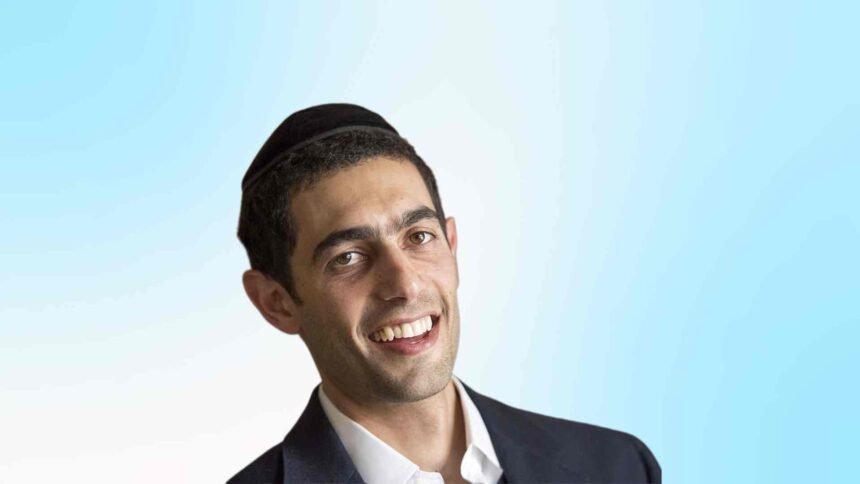Before Roisman became known for reshaping how people connect through video, Ari Roisman’s path was nothing but conventional. Raised in the U.S., Roisman studied engineering at the University of Pennsylvania and later worked in product development and innovation roles. Early in his career, he was drawn to the intersection of technology and human behavior—a curiosity that would later define his work. It wasn’t fame or fortune that drove him, but a deep desire to make communication more natural, more human. That passion eventually led him to co-found Glide, a video messaging app that would quietly influence the way millions interact on mobile devices today.
Ari Roisman never set out to build just another app. When he co-founded Glide, his goal was to fix something he found frustrating: how clunky and impersonal communication had become in the mobile-first world. Texting was too slow, and video calls were too heavy. There had to be a middle ground.
Glide became that solution. It offered users a way to send video messages that didn’t require both people to be online at the same time—fast, personal, and easy. It wasn’t just a neat feature; it was a new way to stay connected. Over the years, Roisman’s journey from idea to impact has offered a set of valuable lessons for founders across industries.
1. Solve a Real Problem, Not a Hypothetical One
Many founders fall in love with their idea. Roisman didn’t. He fell in love with the problem. He noticed that communicating via mobile was either too slow (text) or too demanding (video calls). Glide addressed that middle space: asynchronous video. It allowed users to speak naturally, be seen and heard, and not worry about syncing their schedules.
By grounding the product in real-world friction, Roisman made sure Glide wasn’t just clever—it was useful.
2. Move Quickly, Even If It’s Not Perfect
When Glide first launched, it wasn’t flawless. But that wasn’t the point. The goal was to get something into people’s hands and start learning. Roisman and his team believed that user feedback would guide them better than theory ever could.
That bet paid off. Early users responded positively, and word spread. Within a year, millions had downloaded the app. Instead of obsessing over perfection, Roisman choose momentum.
3. Be Early, Even if It Feels Uncomfortable
In 2012, video messaging startups weren’t exactly popular. Snapchat was still figuring itself out, and mainstream apps hadn’t caught up. While others hesitated, Roisman doubled down. He believed the world would soon crave more visual, expressive communication.
It wasn’t easy. There were questions about data usage, mobile speeds, and user habits. But Roisman held his ground. Today, nearly every major platform—from WhatsApp to Instagram—leans heavily on video. Glide helped pave the way.
4. Simplicity Wins
Glide’s biggest strength? It just worked. No buffering, no complex menus. You opened it, tapped one button, and started talking. That simplicity wasn’t accidental. Roisman obsessed over it.
He knew people wouldn’t adopt a tool that felt heavy or awkward. Especially not for something as intimate as talking to family or friends. So every feature was stripped to the essentials. That laser focus on usability made Glide feel effortless—and earned it loyal users.
5. Be Hands-On—Especially in the Early Days
Roisman wasn’t just the guy at the top making decisions. He was in the trenches—testing features, writing copy, and handling support tickets. That closeness to the product and its users gave him an edge.
It also built trust inside the team. Startups are intense, and founders who lead from the front tend to build tighter, more motivated cultures. Roisman made sure Glide’s early growth was powered not just by tech, but by people who truly cared.
6. Keep Your Team in the Loop—Always
Startups move fast, and the ride isn’t always smooth. Roisman made transparency a priority. Whether it was a product pivot, a funding delay, or a user backlash, he spoke openly with his team.
That honesty created resilience. People weren’t blindsided when things changed. They were informed, prepared, and still motivated. In a world where startup burnout is real, Roisman’s approach kept the team grounded.
7. Think Long-Term, Even When It’s Tempting Not To
Glide’s early traction brought attention from the press, from investors, and from competitors. But Roisman didn’t chase the spotlight. He focused on building a product that would last.
He kept the team focused on core functionality, resisted feature bloat, and explored monetization carefully. That long-game thinking helped Glide stay relevant even as the tech landscape evolved.
Looking Forward
So where does Ari Roisman stand today? Still passionate about communication, still investing time in tools that connect people more meaningfully. Glide remains one of the early pioneers of mobile video, and its DNA can be seen in today’s biggest platforms.
Roisman’s legacy isn’t just an app; it’s an approach: build something real, test with users, stay curious, and lead with heart.
Whether you’re building your first MVP or managing a growing team, his story offers something rare in tech: clarity.
Ari Roisman didn’t chase a trend. He listened to people, built for real needs, and stayed humble through it all. That’s what makes his journey stand out in a startup world obsessed with headlines.
And maybe that’s the real lesson: Innovation doesn’t have to be loud. It just has to work and make someone’s life a little easier.






